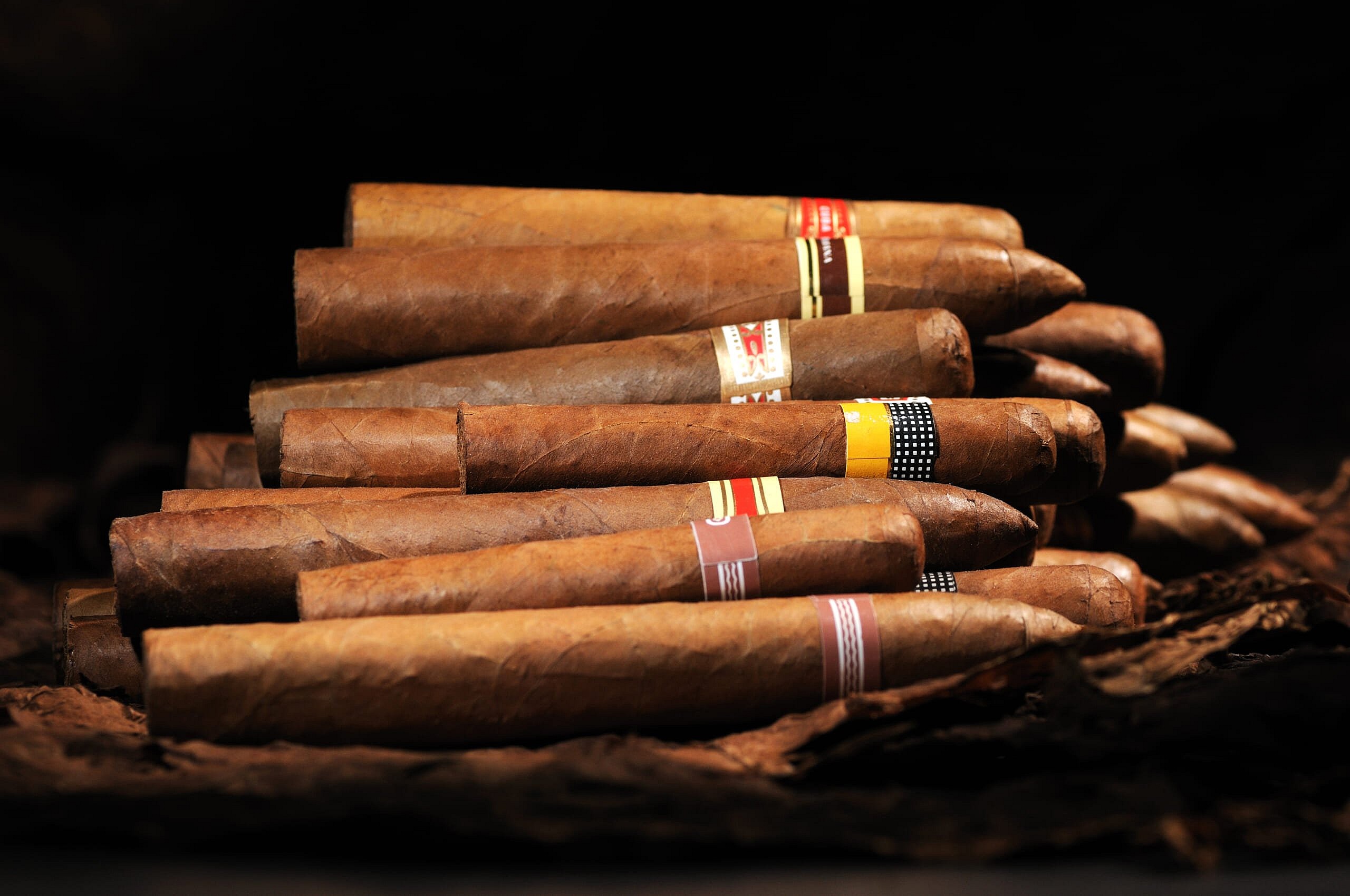10 Exquisite Cigars to Smoke Right Now, According to An Expert
These superior stogies are guaranteed to blow your mind.

The subjective nature of taste means it’s all but impossible to present a definitive Top 10 list of any gastronomic category: whisky, wine, cigars.
One’s personal flavor preferences inevitably come into play. Having been an ardent cigar enthusiast for longer than I care to remember, though, I can certainly offer what I believe is an “approachable” selection of cigars as judged by a relatively educated palate.
Though some might disagree, I’m a simple guy—and as such I’ve always appreciated cigars’ straightforward nature, comprising just a single ingredient: dark tobaccos. What ends up in your hand starts as a leaf on an unassuming plant in the soil. Not just any soil, however.
The best cigar tobacco relies on a finely tuned mixture of earth, temperature, moisture and sunlight. In other words, terroir—a haughty word wine and cigar guys tend to overuse.
https://www.instagram.com/p/ByriEItnNP-
The most famed cigar terroirs are the Vuelta Abajo in Cuba; the Yaque and Cibao Valles in the Dominican Republic; Nicaragua’s highlands and Isla de Ometepe; and, closer to home, the Connecticut River Valley microclimate, where Connecticut shade wrapper leaf is grown.
All geographic differences influence tobacco’s taste, but tobaccos from the locations above, regardless of their country of origin, make up the three basic components—filler, binder and wrapper—used to construct a hand-rolled, long-filler cigars.
Half the cigars below can be found in my new book, The Impossible Collection of Cigars, published by Assouline and out in July. Based on the title, you might assume these are some princely, elusive sticks from the most desirable terroirs on earth—and you’d be right. (Some approach $10,000 per individual cigar, humidor included.)
They’re a selection of a selection, so to speak—a best-of-the-best list of highly curated cigars. That’s why the other half of the 10 listed here are made up of far more attainable cigars, ones you can find with a modicum of effort.
As with any “top anything” list, your primary objective here should be to sample whichever cigars on this list you can get your hands on, and discover your own preferences to determine your ideal balance of mouthfeel and flavor profile.
That’ll enable you to get the most enjoyment possible out of your favorite cigar—and, naturally, a cocktail or two to accompany it.
5 Great Cigars From the Book
Davidoff No. 2 (Cuba)

The original Davidoff No. 2 made in Cuba was said to be one of company founder Zino Davidoff’s favorite cigars; subsequently, the Dominican No. 2 was said to be the favorite morning smoke of Dr. Ernst Schneider, the man who bought the Davidoff brand from Zino. Light-bodied and approachable.
Cohiba 40th Aniversario Behike (Cuba)

There have been many Cohibas made in Cuba since it became a commercial marca, or brand (rolled out in Europe from 1982-’84). The original limited-edition Behike, from 2006, though, is considered one of the most collectible cigars ever. Woodsy, earthy and sweet.
Dunhill Cabinetta (Cuba)

The Cuban Dunhill range was known for its soft (i.e., approachable) and rich medium body and superb but subtle blend. An auction darling and highly collectible, as it is one of the Dunhills closest to today’s generally preferred size.
Tatuaje Frank (Nicaragua)

The first (and rarest) installment of Pete Johnson’s Tatuaje “Monster Series”—an ultra-limited annual release, each based on a classic movie monster, that reaches stores around Halloween.
The Frank (that’s Frankenstein’s monster to you and me) was a Nicaraguan blend and Connecticut Broadleaf wrapper box-pressed double corona offered in a spooky 666 boxes of 13 cigars each. On the bigger side of medium-bodied.
Habanos 1994 Humidor Corona Gordas (Cuba)
https://www.instagram.com/p/vZiN46vsMO
The Habanos ’94 is one of the three cigars collectors have dubbed the modern “Holy Trinity” of commemorative Cuban humidors.
The cigars were available only in one of 502 numbered humidors, each with 50 “Habanos 1994”–banded corona gordas cigars—a modern classic size 5 5/8 in x 46 rg
—redolent of cocoa and nuts. Perhaps the best cigar I’ve ever smoked.
5 Great Cigars From Your Local Tobacconist (Or Online)
Davidoff No. 2—702 Series (Dominican)
https://www.instagram.com/p/Bib7BJVnw0h
Yes, there were two “classic” Davidoff No. 2’s before, but not like this. Using the same binder and filler as the signature Dominican blend, the wrapper here is a tri-Cuban-seed 702 Ecuadorian leaf that elevates this cigar to an amazing medium-bodied iteration.
La Palina Goldie (USA)
https://www.instagram.com/p/BnpLjJJFFMC
The Goldie is an annual La Palina very limited-edition release that debuted in 2012.
While the size and shape (the vitola) changes with each edition and year, the core medium-bodied blend of Dominican and Nicaraguan fillers, including the rare sun-drenched high-primed medio tiempo, Ecuadorian binder and Ecuadorian habano wrapper is maintained.
La Flor Dominicana LG Small Batch (Dominican)
https://www.instagram.com/p/-NNofezWSO
A special biannual or triennial Dominican puro release (in shifting vitolas) that comes packaged in long rectangular cabinets of 105 cigars.
Since the sub-brand debuted in 2006, there have been six numbered and vintage LG Diez Small Batches. Rich umami plus molasses and dark-fruit flavors make this a cigar enthusiast’s dream.
Nat Sherman Timeless 2019 TAA (Dominican)
https://www.instagram.com/p/ByQUWOaHkXj
Nat Sherman has been “Tobacconist to the World” since 1930, but this is a decidedly twenty-first-century fuller- to medium-bodied Dominican puro that is rich, earthy and sumptuous.
Released this March and limited to 1,500 boxes of 10 cigars, it’s well worth seeking out and sampling.
Quai d’Orsay No. 54 (Cuban)
https://www.instagram.com/p/By8e6Ftnpjw
While the marca Quai d’Orsay has been a premium boutique brand (initially for the French market) since it debuted in 1973-’74, only two years ago was its packaging revamped and redesigned—thankfully, remained, albeit in new, contemporary vitolas—notably the No. 54.
Aaron Sigmond is the author of “The Impossible Collection of Cigars” (Assouline). He was the founding editor of “Smoke” magazine and The Cigar Report.
